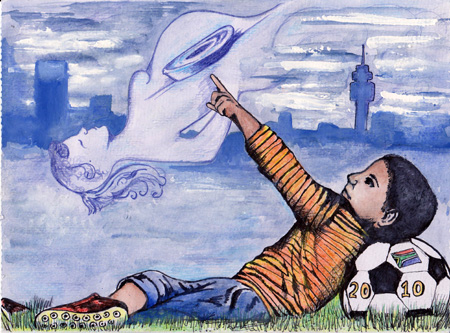The World Cup brings more than passing excitement to the world. This newly published study suggests that the World Cup also brings, eventually, a change in the world population:
“The sex ratio at birth in South Africa increased 9 months after the 2010 FIFAWorld Cup,” Gwinyai Masukume and Victor Grech, Early Human Development, epub 2015. The authors report:
“Results: February and March 2011 about 9 months after the World Cup, had the highest observed sex ratio at birth (relatively more male births) of 0.5063 for the period 2003 to 2012. The observed sex ratio at birth in the considered two months of 2011 was 0.63% (p = 0.02) greater than the sex ratio at birth for corresponding periods from 2008 to 2012. The increase noted in 2011 corresponds to more than 1000 extra male births than expected for February and March 2011.
“Conclusion: The 2010 FIFAWorld Cup was followed about 9 months afterwards by a significant increase in the sex ratio at birth. The main mechanism driving the observed increase in the sex ratio at birth in South Africa is most likely more frequent sexual intercourse at population level during the tournament.”
Dr. Masukume sent us this drawing, by Genevieve Louw, to accompany the news. (Clarification, for anyone who might need it: the round object represents both a soccer stadium and a uterus.)

There’s a discussion of this, on The Conversation.
BONUS CONTEXTUAL INFO: Here’s some excitement-of-sports context for Americans, for whom the World Cup is still a wondrously new concept: 1. “Super Bowl outcome’s association with cardiovascular death“; and 2. “Comparison of total and cardiovascular death rates in the same city during a losing versus winning super bowl championship“.
UPDATE (November 7, 2015): a BBC Interview with Dr. Masukume
UPDATE (December 22, 2016): Dr. Masukume produced this video exploring the ups and downs — and mysteries — of the sex ratio at birth: